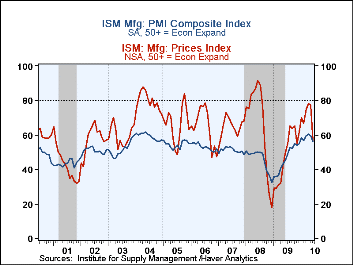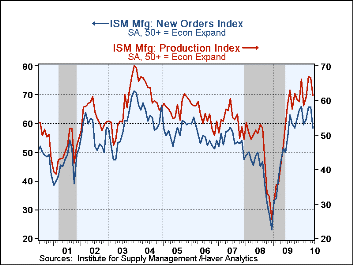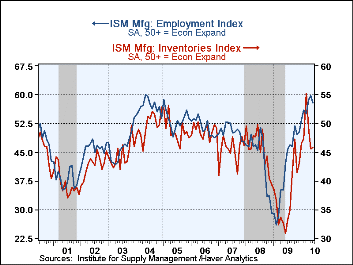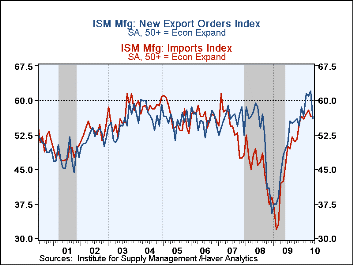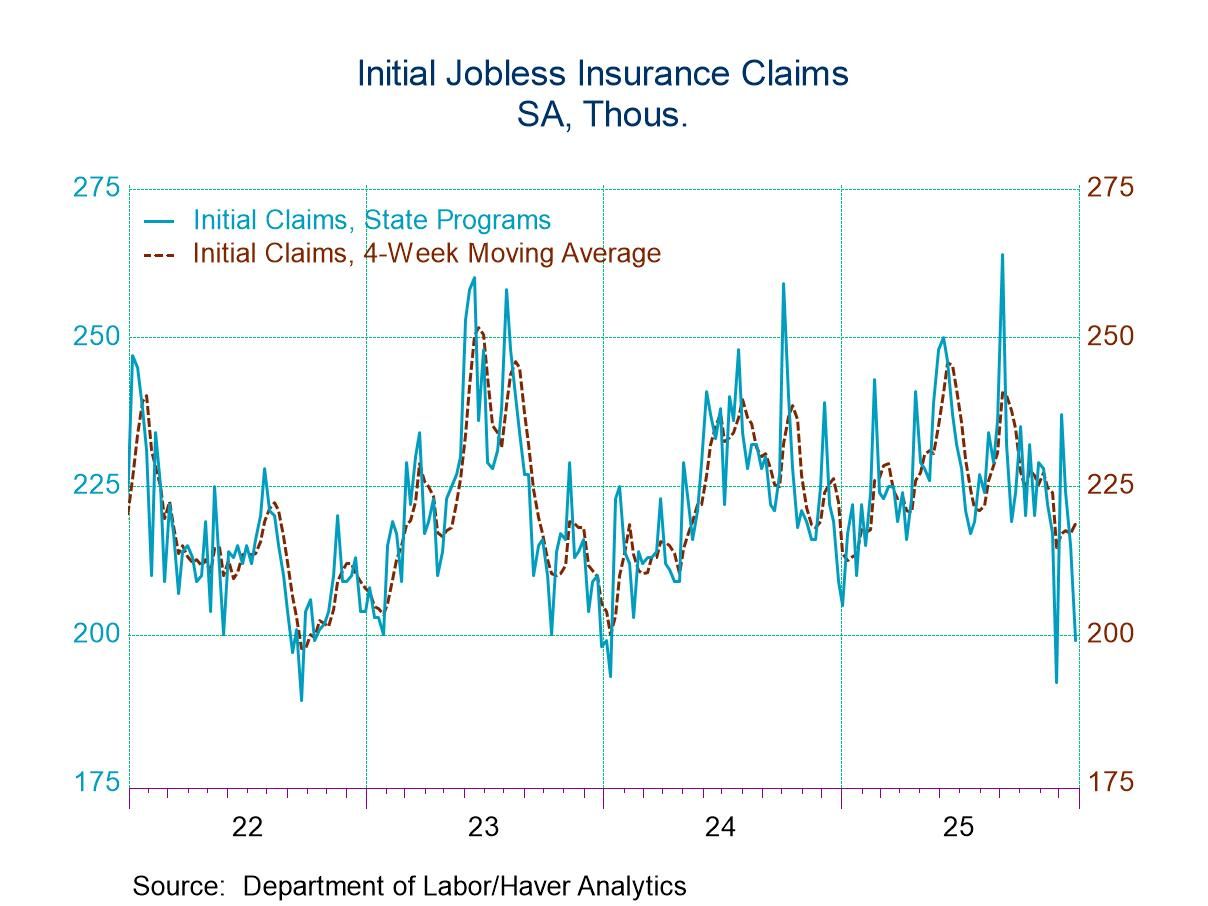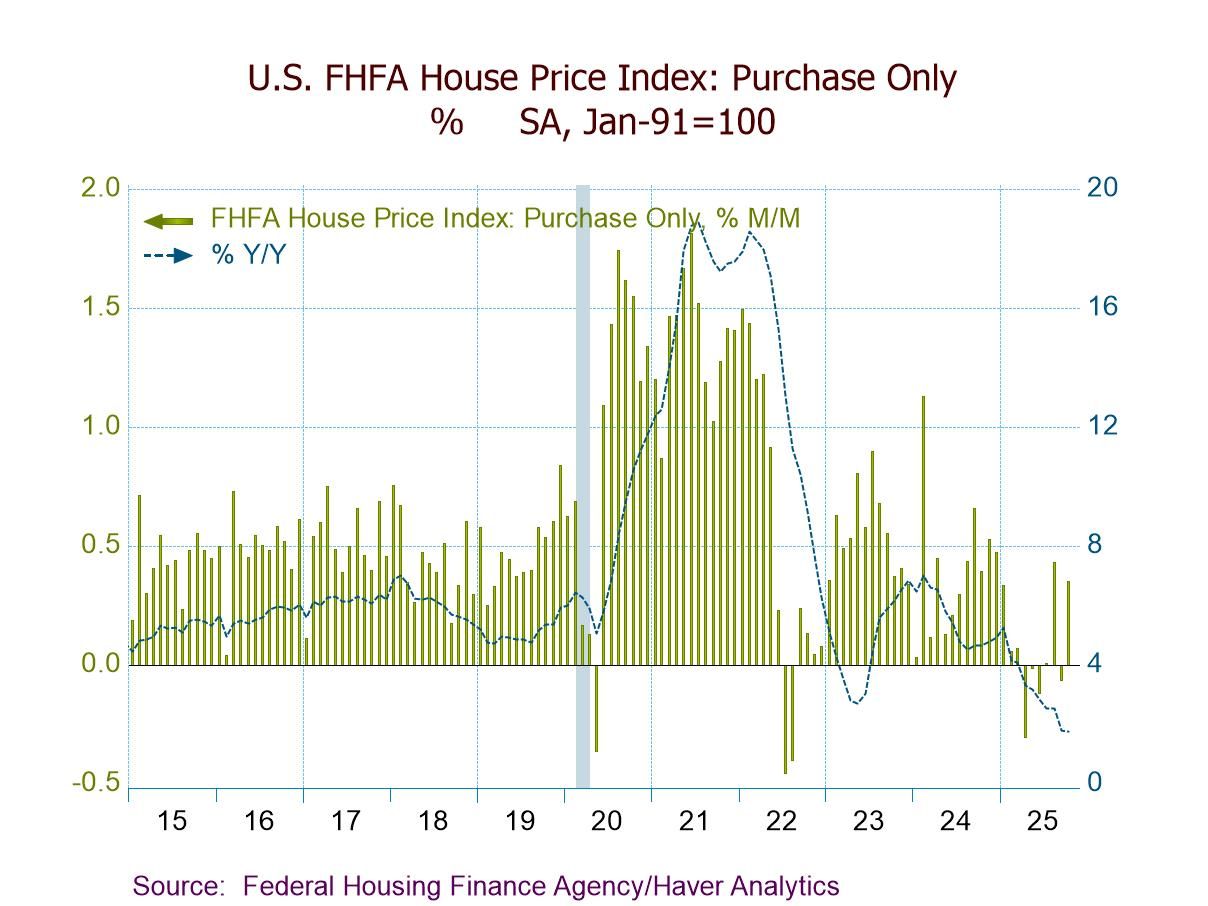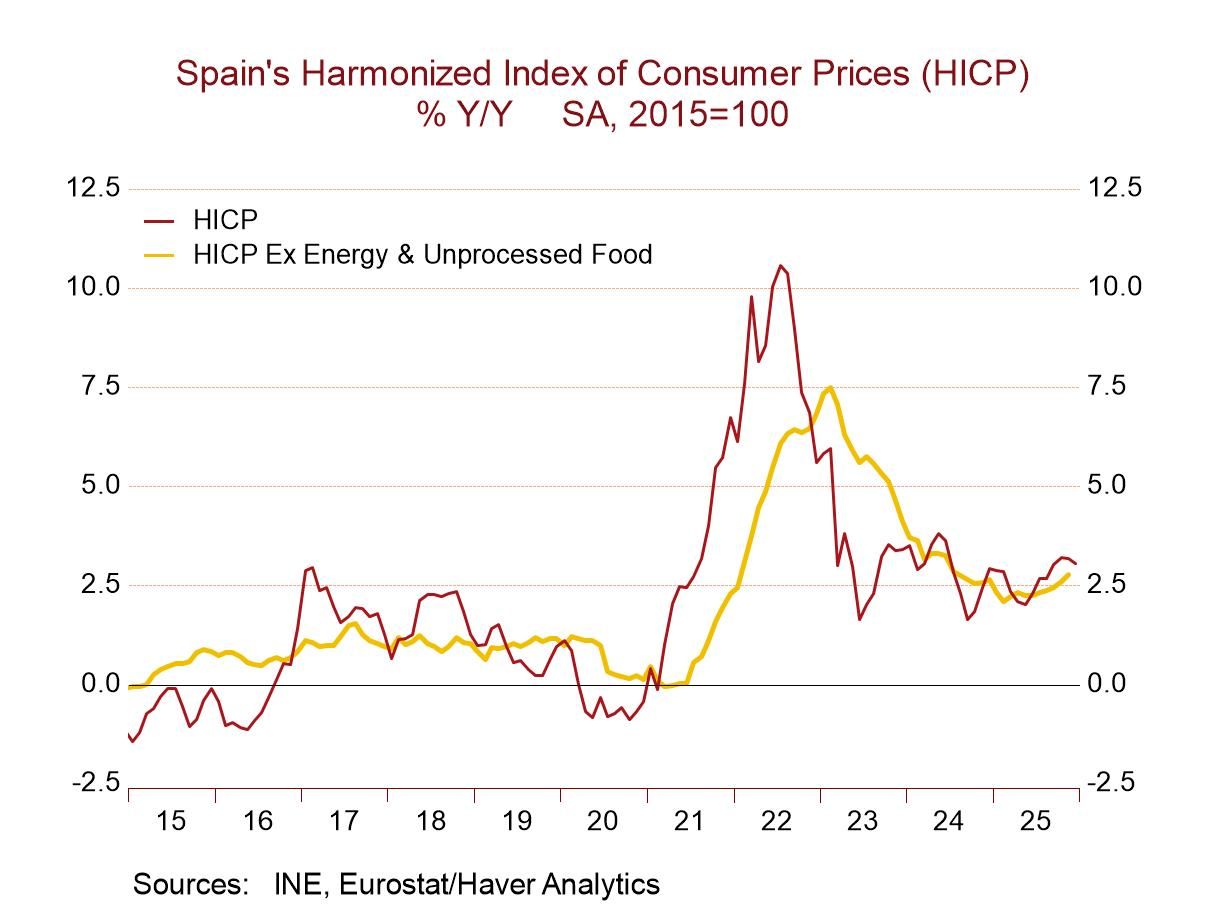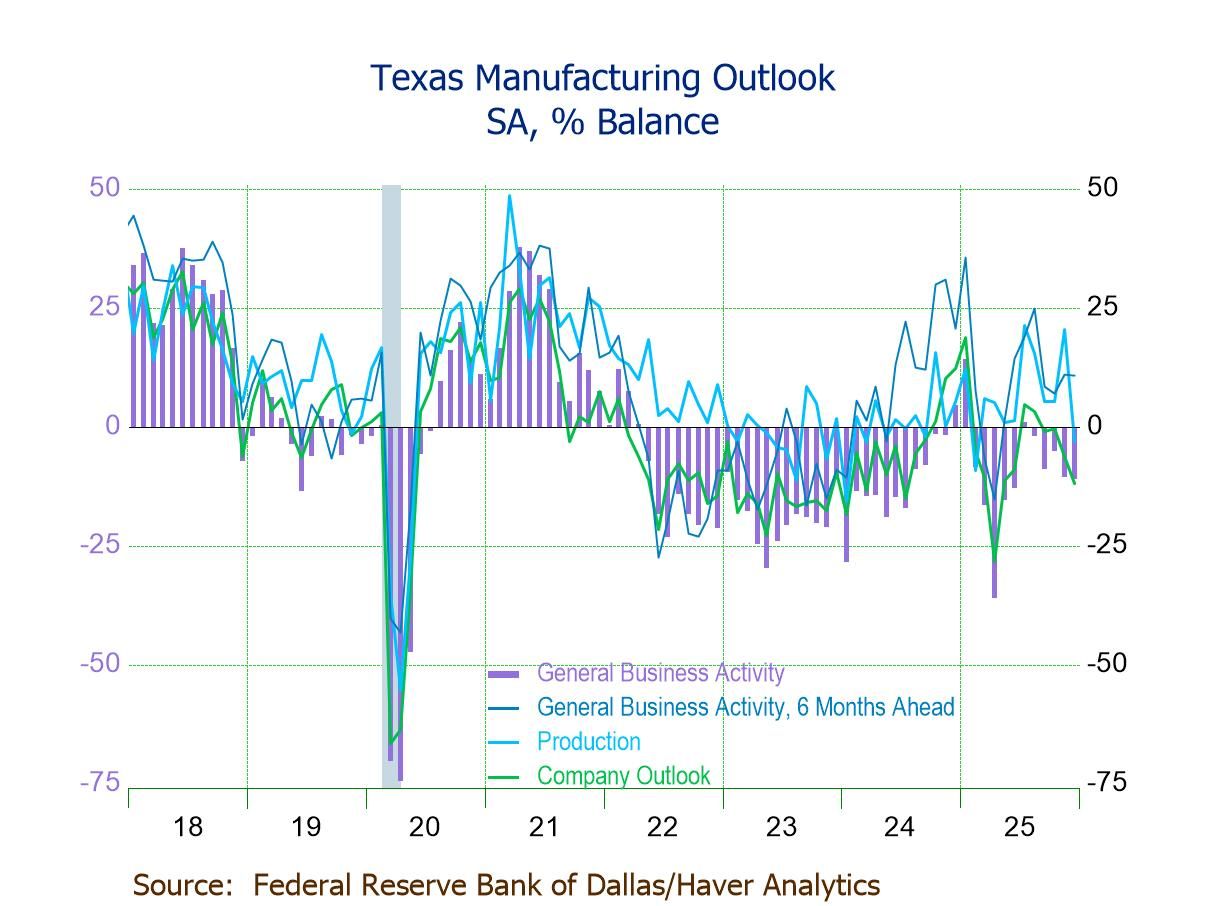 Global| Jul 01 2010
Global| Jul 01 2010U.S. ISM Index Falls Again
by:Tom Moeller
|in:Economy in Brief
Summary
Growth still is positive, but for the factory sector the pace of improvement waned further last month. The June composite index from the Institute for Supply Management slipped to 56.2 from 59.7 in May. The latest figure disappointed [...]
Growth still is positive, but for the factory sector the pace of improvement waned further last month. The June composite index from the Institute for Supply Management slipped to 56.2 from 59.7 in May. The latest figure disappointed Consensus expectations for a reading of 59.0 but still it was the eleventh consecutive monthly reading above 50. It was up from the low of 32.5 reached in December '08. (Any figure above the break-even point of 50 suggests rising activity.) The ISM data is available in Haver's USECON database.
Declines amongst the subseries were broad-based including new orders, production and vendor performance which all fell sharply. The employment index also fell moderately to 57.8 and reversed the gains of the prior two months. During the last ten years there has been an 89% correlation between the ISM employment index and the m/m change in factory sector payrolls. The inventory index rose modestly.
Also falling sharply was the export order index to its lowest level since December. During the last ten years there has been an 88% correlation between the level of the index and the quarterly change in merchandise exports. Nineteen percent of respondents reported higher export orders while seven reported lower orders.
The separate index of prices paid fell sharply to 57.0 which was the lowest level since November. It remained up from the December '08 low of 18.0. Just 32% (half the recent high) of respondents reported higher prices while 18% indicated lower prices. During the last twenty years there has been an 83% correlation between the price index and the three-month change in the PPI for intermediate goods.
The ISM data are available in Haver's USECON database.
| ISM Mfg | June | May | April | June '09 | 2009 | 2008 | 2007 |
|---|---|---|---|---|---|---|---|
| Composite Index | 56.2 | 59.7 | 60.4 | 45.3 | 46.2 | 45.5 | 51.1 |
| New Orders | 58.5 | 65.7 | 65.7 | 49.9 | 51.6 | 42.1 | 54.3 |
| Employment | 57.8 | 59.8 | 58.5 | 42.1 | 40.5 | 43.3 | 50.5 |
| Production | 61.4 | 66.6 | 66.9 | 53.2 | 50.4 | 45.2 | 54.1 |
| Supplier Deliveries | 57.3 | 61.0 | 61.3 | 50.5 | 51.4 | 51.6 | 51.2 |
| Inventories | 45.8 | 45.6 | 49.4 | 30.9 | 37.1 | 45.5 | 45.4 |
| Prices Paid Index (NSA) | 57.0 | 77.5 | 78.0 | 50.0 | 48.3 | 66.5 | 64.6 |
Tom Moeller
AuthorMore in Author Profile »Prior to joining Haver Analytics in 2000, Mr. Moeller worked as the Economist at Chancellor Capital Management from 1985 to 1999. There, he developed comprehensive economic forecasts and interpreted economic data for equity and fixed income portfolio managers. Also at Chancellor, Mr. Moeller worked as an equity analyst and was responsible for researching and rating companies in the economically sensitive automobile and housing industries for investment in Chancellor’s equity portfolio. Prior to joining Chancellor, Mr. Moeller was an Economist at Citibank from 1979 to 1984. He also analyzed pricing behavior in the metals industry for the Council on Wage and Price Stability in Washington, D.C. In 1999, Mr. Moeller received the award for most accurate forecast from the Forecasters' Club of New York. From 1990 to 1992 he was President of the New York Association for Business Economists. Mr. Moeller earned an M.B.A. in Finance from Fordham University, where he graduated in 1987. He holds a Bachelor of Arts in Economics from George Washington University.


